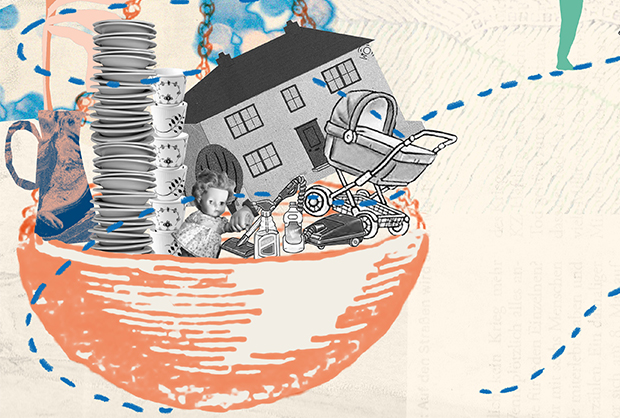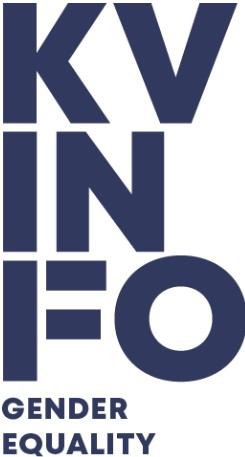Knowledge
Parental leave

The distribution of parental leave for the care of newborn children has a great influence on gender equality. Partly, because it affects who looks after the child and takes care of the household chores. But also in relation to the parents’ career, salary and pension savings.
In Denmark, women took 89.1 percent of the total parental leave and men took 10.9 percent in 2019, according to a report from Statistics Denmark.
The short version of the parental leave rules
In Denmark, parents are entitled to a total of 52 weeks of paid leave following the birth of a child.
The leave thus gives the right to absence from work and to parental benefits.
Some collective agreements give the right to full pay during the period of leave. In these cases, the employer receives the parental benefit as reimbursement.
Uneven leave is costing all parents
The very uneven distribution of leave costs women dearly in pay, careers and pensions.
Research shows that in Denmark, women’s and men’s income develops largely in parallel until the birth of the first child. Then women’s gross income falls almost 30 percent. The birth of the first child does not affect the income of men. Read more about the link between gender and equal pay via this link.
Men, on the other hand, lose within the family, where, for example, they could have developed a stronger attachment to the child if the leave had been more equally distributed.
New rules correct bias
New parental rules are on the way here in Denmark. They will begin to take effect in August 2022.
The new rules are intended to change the very uneven distribution of leave between women and men, but also provide more flexible conditions for solo parents and rainbow families.
Current rules
The current parental leave rules are based on father-mother-and-child families and covers pregnancy, maternity and parental leave.
The father has an earmarked right to two weeks of paid paternity leave. The mother has earmarked the right to 14 weeks of paid maternity leave as well as four weeks of paid pregnancy leave.
In addition, the parents are entitled to 32 weeks of paid parental leave, which, according to the Maternity Act, they are free to distribute among themselves. In practice, most women take all or the vast majority of the leave.
Co-mother in a lesbian parenting constellation has the same rights as father in a heterosexual constellation. By contrast, other co-parents are not mentioned in the law.
Solo parents are entitled to 46 weeks of paid leave, as well as four weeks of pregnancy leave. The solo parent thus has two weeks less leave than a family with two parents.
Parents who adopt a child are entitled to the same number of paid leave weeks as other parents.
Click here if you want to read more about the current maternity rules.
Overview: Gender and work
Men get new jobs faster than women do. Women are higher educated than males. Women and men share maternity and parental leave very unequally.
New rules improve the rights of men
On August 2, 2022, the new parental rules come into force. Their purpose is “to create more equality between men and women in the labor market and in the family”.
The significant and broadly debated difference is that in families with two parents, each parent will in future be entitled to 24 weeks ‘paid leave, regardless of the parents’ gender.
Of these, 11 weeks are earmarked. That is, they ‘disappear’ if the parent in question does not take these 11 weeks’ leave.
The remaining 13 weeks can be transferred to the other parent if both parents agree. Self-employed and students are exempt from earmarking.
In addition, the parent giving birth is entitled to four weeks’ pregnancy leave in the period leading up to the birth.
Improved conditions for rainbow families and single parents
The new parental scheme will also create more flexibility for rainbow families and single parents.
Rainbow families are given the opportunity to transfer part of the leave to other co-parents, and single parents can transfer leave to close family members, so that the single parent can be relieved during the first time with the child.
However, this rule will not enter into force until 1 January 2024, “for the sake of Udbetaling Danmark’s implementation of the new rules”.
The forthcoming rules do not change the fact that single parents have two weeks less leave than families with two legal parents. The single parent will thus also after August 2022 be entitled to 46 weeks of paid leave and four weeks of paid pregnancy leave.
Equal leave to improve gender equality
The new maternity rules will be introduced as a result of an EU directive requiring all EU countries to give both father and mother earmarked the right to at least two months of paid leave by 2022.
Three stated objectives of the EU directive are to:
- “contribute to achieving gender equality by promoting women’s participation in the labour market”
- “encourage an equal sharing of caring responsibilities between men and women”
- “reduce the gender income and pay gap”.
Requests for more earmarking
After several years of debate on earmarked paternal leave, a political majority reached an agreement in October 2021 on the implementation of the EU directive in Denmark. The parties behind the agreement are the Social Democrats, Venstre, SF, Radikale, Enhedslisten and Alternativet.
SF, Radikale, Enhedslisten and Alternativet had in advance demanded more earmarked leave than in the EU’s minimum requirements.
Iceland leads the way
Denmark is the Nordic country with the least earmarked parental leave, and this will also be the case after the new rules come into force.
Iceland is the country in the world that has the most earmarked parental leave: 20 weeks are earmarked for each of the two parents.
More specifically, each parent is entitled to six months of paid leave, six weeks of which can be transferred to the other parent if both agree. A similar distribution applies to rainbow families, while solo parents are entitled to 12 months, i.e. the same amount of leave as families with two parents.
Already in 2000, Iceland introduced a so-called 3-3-3 model: three months of earmarked leave for father, three months earmarked leave for mother and three months for sharing. Based on good experience, a unanimous Icelandic parliament decided to extend the earmarked parental leave to four months effective from 2020 and 20 weeks effective from 2021.
Icelandic fathers take long leave
One of the positive effects of earmarked leave in Iceland is that children have acquired a significantly closer attachment to their father without this happening at the expense of attachment to their mother. The fathers’ more active role in childcare has also helped to promote equality between women and men in the Icelandic labor market.
Prior to the introduction of earmarked leave in Iceland, only a minority of new fathers took leave.
After the law came into force, the share rose to over 80 percent within a few years. However, the distribution between mother and father is not exactly the same: A survey of leave taken in Iceland in 2016 showed that 99 per cent of mothers and 82.7 per cent of fathers took leave.
Click here to read more about the good experiences with earmarked maternity leave in Iceland.

